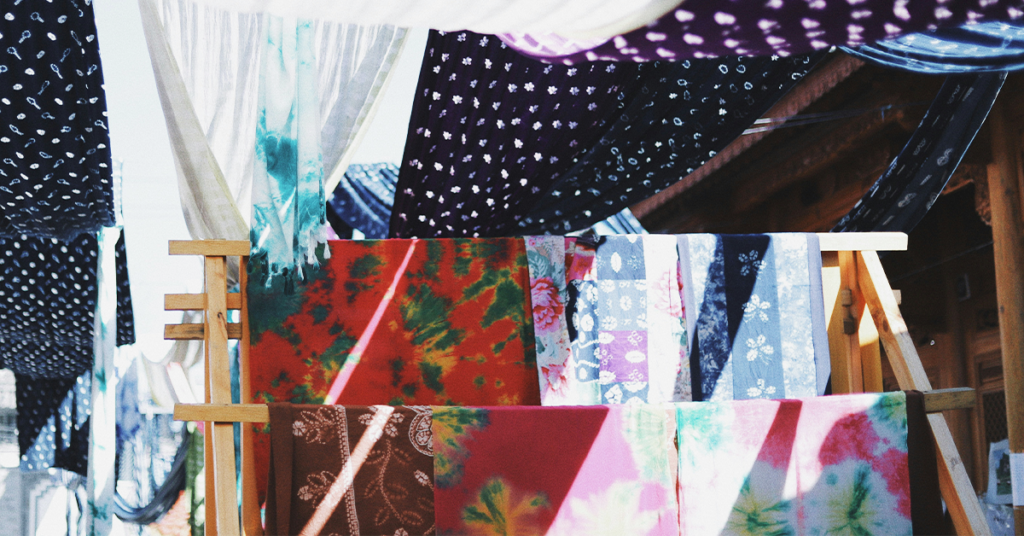We’ve been advocating for an ethical fashion system for over a decade now, shining a spotlight on how slowly fashion companies are progressing and the dire consequences their inaction is having on garment workers and the environment.
But I want to take a moment to share the opposite. What are the benefits of progress? What does it look like when the fashion system works well, and is this worth striving for?
Let’s step through the lifecycle of a cotton t-shirt in a healthy fashion system—from the cotton farm to the consumer.
The Cotton Farm
In a healthy system, cotton is grown in ways that prevent the depletion of soil nutrients and water from the local catchment. Farmers and cotton-pickers are treated with dignity, and have the tools and training they need to improve efficiency and sustainability. Fertiliser chemicals are carefully chosen so that nearby water sources still support diverse and thriving ecosystems.
Working to the seasons and phases of the growing cycle can be hard work, but farmers are relieved that the threat of catastrophic climate-induced disasters has lessened, thanks to governments and business stepping up to reduce their emissions.
The Fabric Mill
After the cotton has been ginned (the process of separating cotton fibres from seeds), it’s sent to the fabric mill to be made into durable fabric. Rather than being blended with another material like polyester, the fabric is made from only this cotton, making it easier to recycle at the end of its life.
The fabric is prepared using dye that has undergone rigorous chemical testing to ensure it doesn’t harm the health of workers at the mill or eventual wearers of the garment. The mill has found innovative ways to reduce the water intensity of its production, and a handful of buyers pooled funds to invest in the technology proposed by the mill. Workers are aware of their rights and how to work safely in their roles. They’re free to pick up extra shifts, but it’s never expected of them.

The Factory
Both men and women feel safe and accepted in their workplace and are represented equally at different tiers of roles and management. Not only do managers understand the needs of their employees, but workers are free to voice any concerns—individually or collectively—to their managers and to the companies that order from their facility. Every worker is consistently paid enough to meet their family’s needs, meaning their children are provided with nutritious food and a good education, so they can grow into strong and capable adults.
The Wardrobe
The person who purchases this t-shirt trusts that the brand has oversight of their supply chain and is taking responsibility for their impact on those involved. They can tell the garment is good quality and are glad to find exactly what they were looking for to fill a gap in their wardrobe. The t-shirt makes them feel good in their skin and they’re excited to see that people of all shapes and sizes are catered for in this store!
The t-shirt costs a little more than they used to spend, but now that they’re buying less clothing, they’re able to afford investing in a well-made piece that will last. When they take the shirt home, they love to wear it and only wash it when needed. They wash in cold water and line-dry in the shade to be gentle on the t-shirt and little lighter on the planet at the same time.
The Next Life
After a few years, the owner has stopped pulling the t-shirt out of their wardrobe as much, so it’s the perfect time to pass it on at their friend’s annual clothing swap. There someone snaps it up and wears it for many more years to come. Eventually the t-shirt becomes too worn to wear and gets demoted to the role of cleaning rag—much better than throwing it away!
This is a fashion system worth fighting for. Yet in every stage of the current fashion lifecycle, the reality for fashion companies, workers and consumers is too often the opposite.
If you’d like to learn more about the realities in our fashion system, please check out our Ethical Fashion Report. As you deepen your understanding, we also encourage you to act by speaking out to some of your favourite brands.



